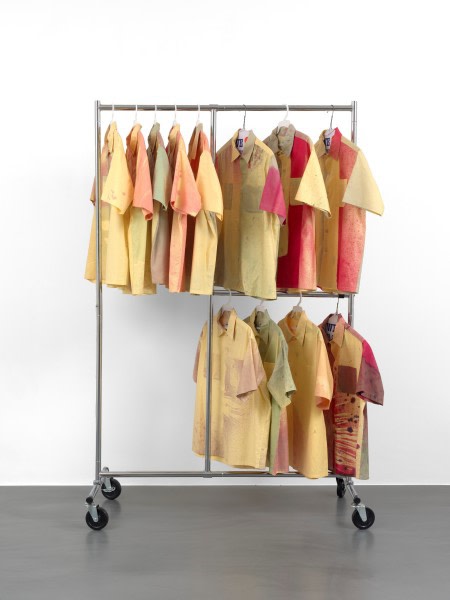Private View: 16th September 2021, 4.00-8.00 pm
Artists
Youngsook Choi
Enam Gbewonyo
Gee’s Bend Quiltmakers (Loretta Pettway Bennett)
Basil Kincaid
Eric N. Mack
Althea McNish
Emily Moore
Anya Paintsil
Renee So
Cristina Tufiño
Michaela Yearwood-Dan
Curated by
Enam Gbewonyo and Marcelle Joseph
‘‘All that you touch
You Change.
All that you Change
Changes you.
The only lasting truth is Change.
God is Change.’
- Octavia E. Butler in 'Parable of the Sower' (1993)
Lychee One proudly presents Hapticity: A Theory of Touch and Identity, a group exhibition curated by Enam Gbewonyo and Marcelle Joseph and featuring the work of an inspiring roster of 11 international artists and designers, cross-generational in scope and working across a myriad of material-based practices that interweave the processes of tactile making with the complex intersectional frameworks of race, gender, sexuality and class today. How does touch express lived experience and humanity?
We are slowly emerging from an unimaginable period in which human touch, that inherent form of connection so deeply rooted in human behaviour, was forbidden. Yet it is through touch that we experience and thus connect to the world, its celestial energies and each other on a cellular level. The impact on our collective mental health has been immeasurably taxing to say the least. It is no coincidence that interest in tactile forms of making such as knitting have re-emerged during this period. Art and craft are long hailed for their healing benefits, which are rooted in the nature of the making process. Never has the importance of this sensory experience been clearer. In lieu of human touch, what better than the touch of yarn, clay or fabric against the skin as it is moulded and woven into new forms of function?
On the surface, the works in this exhibition provide an immediate sensory connection but there are other stories buried deeper, metaphysically, within their layered materiality. The artists in this exhibition demonstrate a mastery of materials in which intricate new languages are fashioned. There are those for whom the used clothing and material of others - familial or unknown - tells the story of the whole. For some, their materials are the vehicle with which mythology and prehistoric cultures are reimagined. For others, it is the simple joy of finding new freedom in old ways of mark making. And others still, a visceral exploration of the historical and present-day effects of abuses of power on the Global South and its diaspora. Hapticity: A Theory of Touch and Identity reveals how, for tactile makers such as these eleven artists, touch becomes a core element in their exploration of identity and self. Every fold, stitch and mark made – a nuanced detail of lived experience. The complete work forever cementing these stories in the fabric of global history.
As artists, to create by hand is vital. In truth, it is vital to all. It is how we make sense of the world and our place in it. Yet we live in a world reliant on mass production, whose skewed values have manufactured a materialistic consumerist society. The bedrock of capitalism! In their very act of employing historically indigenous crafts, the artists in this exhibition challenge this way of life. These are acts of rebellion and resistance. Invocations of the ancestral as a pathway to truth. Craft by its very existence negates the limitations placed upon it in the present. Its processes are an unlearning of patriarchal values and a return to an inherently universal form of expression. In the handmade, there is no hierarchy and no barriers to race, gender, sexuality or class. It is being in and of itself. It is an extension of its maker, whose codes (DNA) and energy now lay bound within it. And the made object becomes a symbolic talisman. Making beauty out of the truth and ugliness of our world, a physical manifestation of the experience of the world as it is felt within the body.
Tactile makers are custodians of the tradition and its message, exploring community with or through the products and processes of the sensory.Hapticity: A Theory of Touch and Identity makes known the alchemical power of touch to translate being and consciousness into the very physical so that it can be further transmitted and understood by the consciousness of the many. The works in this exhibition will channel their message through and to the audience just as they did their makers. The viewer needs but go within themselves and feel the energy of the makers’ touch.
Text by Enam Gbewonyo
Special thanks to Haringey Council and the Bruce Castle Museum for the loan of the Althea McNish work in this exhibition from their collection.











